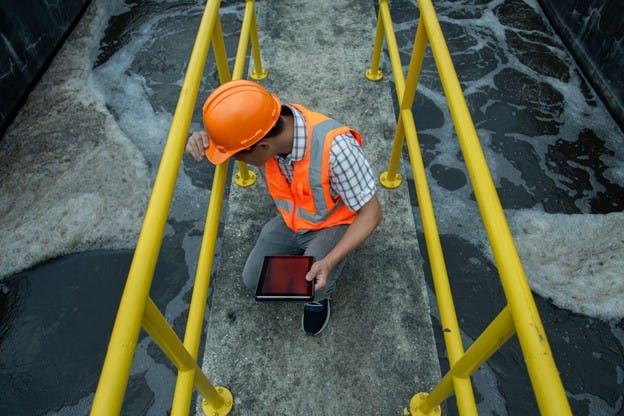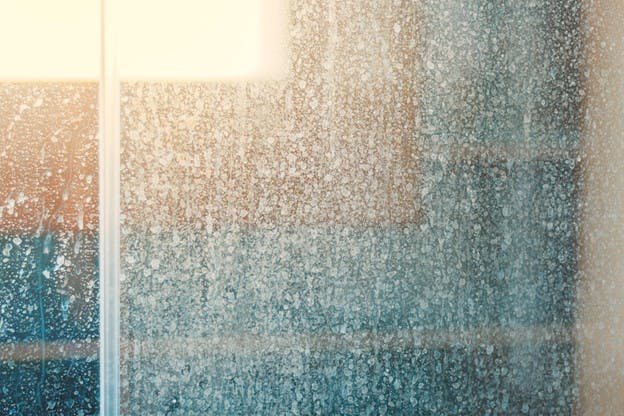🌟 New Arrival! Upgrade Your Water with Our Advanced Pitcher Filter. Shop Now
January 2023
Your Guide to New York City Water Quality
There’s no place quite like New York City. The streets are always busy, the skyline is awe-inspiring, there’s great food on every corner, and the entertainment is the best in the world. To live in NYC is a gift but also a constant negotiation. Sure, you can get top-notch takeout at 2 a.m., but you dream of a closet to put your coat in or a patch of grass you don’t have to walk a mile to find. New York City water is a similar kind of struggle. Depending on what’s going on with the water source the city is using at the time, you could have crisp, clean, soft water, or you could have hard water that tastes and smells like musty swamp mud. The old pipes are full of sediment, which you get a reminder of every time they are disturbed by a water shutoff.
Where Does the New York City Water Supply Come From?
New York City water comes from a 2,000 square mile watershed in the Hudson Valley and Catskill Mountains area. The watershed is made up of 19 reservoirs and three controlled lakes.
The upstate reservoirs are grouped into the Catskill/Delaware Water Supply System and the Croton Water Supply System. The Groundwater Supply System in Queens is no longer active.
As you can imagine, to meet the needs of one of the most densely populated cities in the world, the water system has to be massive — and it is. The New York City Water Supply pumps out almost 1.2 billion gallons of clean water per day.
Not only does it supply over a billion gallons to the 8.5 million residents of the five boroughs, but the system provides another 110 million gallons to the surrounding counties of Westchester, Putnam, Orange, and Ulster. This all accounts for half of the water needs of New York state.
How Is New York City Water Quality?
New York City water quality is some of the best in the United States, according to the New York State Department of Environmental Conservation. They refer to NYC water as the “Champagne of drinking water”.
NYC water is remarkable in that it is the largest drinking water system in the U.S. that remains unfiltered. The water quality from the Catskill/Delaware watershed area is high enough to meet federal and state guidelines for drinking water without the need for filtration.
It would require $8-$10 billion to build a water filtration plant, plus $1 million per day to run it, so the New York City Department of Environmental Protection works hard to keep it that way.
Furthermore, by keeping pollution levels low around the surface water systems that feed the watershed, they can reduce the need for water treatment.
Some of the funds they’ve saved by not needing filtration have been used to buy up large amounts of the watershed area so they can control activities and construction close to this precious public health resource. There are also multibillion-dollar upgrades going on at the Catskill and Delaware aqueducts.
There are still some concerns, though.
Is New York City Tap Water Safe to Drink?
While New York City water quality generally meets the standards of the U.S. Environmental Protection Agency (EPA), some major concerns remain. There are two issues in particular:
- The Catskills watershed has problems with sediment and turbidity. Turbidity is a measure of cloudiness in the water caused by loosely floating contaminants. This sediment is a problem because it can transport pathogens. It can also limit the effectiveness of disinfectants used in water treatment.
- Some sources of New York City water are overly rich in phosphorus. This can encourage algae blooms, which lower the quality of the water. Algae blooms affect the taste, odor, and color of the water and mean that extra chlorine must be added.
Many people don’t like the smell or taste of chlorine, or that it dries out your skin and hair. If you’ve spent a winter in NYC, you know it's already a battle to retain moisture in your skin and hair without additional chlorine making it worse.
While the taste and smell might annoy you — and dry skin is no fun — the real danger of this added chlorine is that it can create disinfection by-products (DBPs). Many DBPs are suspected carcinogens and also might increase the risk of miscarriages.
What Are Disinfection By-Products?
Chlorine has been a common way to disinfect public water supplies for decades. The chlorine levels used to treat water are considered safe by the Environmental Protection Agency (EPA), but DBPs can get out of hand.
Disinfection by-products are formed when chlorine interacts with organic matter. The amount of DBPs created depends on the amount of chlorine used, the amount of organic matter in the water, and the temperature of the water.
New York City water quality is affected by many types of DBPs. Some of these are regulated and some aren’t, but many of them are potentially dangerous to your health and may carry cancer and reproductive risk.
What DBPs Are in NYC Water?
According to a New York City water quality report, a regulated group of five haloacetic acids (HAA5) was over the legal limit in December 2021. This was most likely due to several large storms which stirred up organic matter in the source surface water.
While this series of storms was a one-off event, the HAA5 levels in NYC water are still typically double that of the U.S. average in other public water systems. NYC’s HAA5 levels are usually within legal limits, but the Environmental Working Group argues the legal limits are long overdue to be updated and says the current limits don’t ensure safety.
Are the DBP Levels in New York City Safe?
The Environmental Working Group (EWG) — a Washington, D.C.-based nonprofit that monitors drinking water — compares levels of each city's reported contaminants with the most recent safety recommendations from the scientific community. While the EPA hasn’t updated its legal limits for contaminants in 20 years, the EWG’s position is that those regulations are long outdated and not in line with the prevailing science.
While the DBPs in NYC tap water are in compliance with EPA regulations most of the time, they are hundreds of times higher than the EWG recommended levels. Let’s look at how NYC levels of DBPs compare to the EWG recommendations:
HAA5
The five haloacetic acids that make up HAA5 are monochloroacetic acid, dichloroacetic acid, trichloroacetic acid, monobromoacetic acid, and dibromoacetic acid. Long-term exposure to these contaminants can lead to cancer.
NYC water has exceeded the EWG recommendations for safety by 379 times:
- EPA maximum allowance: 60 parts per billion (ppb)
- EWG recommended maximum: 0.1 ppb
- NYC maximum detected level: 37.9 ppb
HAA9
HAA9 is an expanded set of haloacetic acids. It includes all of the contaminants from HAA5 along with bromochloroacetic acid, bromodichloroacetic acid, chlorodibromoacetic acid, and tribromoacetic acid.
NYC water has exceeded the EWG recommendations for safety by 892 times:
- EPA maximum allowance: No legal limit
- EWG recommended maximum: 0.06 ppb
- NYC maximum detected level: 53.5 ppb
Total Trihalomethanes (TTHMs)
Like the haloacetic acids above, TTHMs are formed when chlorine interacts with organic compounds in drinking water. They are also known to be possible carcinogens. This category is made up of four chemicals: chloroform, bromodichloromethane, dibromochloromethane, and bromoform.
NYC water has exceeded the EWG recommendations for safety by 254 times:
- EPA maximum allowance: 80 ppb
- EWG recommended maximum: 0.15 ppb
- NYC maximum detected level: 38.1 ppb
What Other Contaminants Are Found in NYC Drinking Water?
New York City water quality isn’t just affected by the by-products of disinfection. Another concern in NYC water is microbial contaminants like cryptosporidium and giardia. While there have been no major outbreaks of disease from these two contaminants, NYC does advise talking to your doctor about consuming NYC drinking water if you are immunocompromised.
The symptoms you might experience if infected by these microbial contaminants include nausea, diarrhea, and abdominal cramps.
Is NYC Water Hard or Soft?
Water is considered hard when it contains a large amount of mineral solids like calcium and magnesium. Minerals often dissolve into groundwater as it passes through rocks and soil.
Hard water is not detrimental to your health, and it can even be a source of nutrients. However, hard water can also cause:
Plumbing problems
- Clogging and crust in your water fixtures and faucets
- A loss of efficiency in your water-using appliances
- Your soap to not lather
- The formation of bacteria-attracting soap scum on your tiles and tub
- Water spots on your dishes and car
- Bad hair and skin days
New York City water comes from multiple sources. The Catskill/Delaware aqueduct has soft to slightly hard water, while the Croton aqueduct provides moderately hard water. Because these two sources are blended, NYC water is considered moderately hard.
HomeWater has a variety of ways to treat hard water so you can finally say goodbye to that ring around your tub. Check out our salt-free and traditional water softeners for more information.
How Do You Know You’re Getting the Best Water Quality in Your NYC Home?
With almost 10 million people relying on water from this one system, New York City water quality is very important.
If you’re concerned about your NYC water quality — or just want to make sure you have the best tasting water possible — HomeWater filtration systems can put your mind at ease. You won’t have to worry about a strange swamp taste or any rusty surprises.
If you live in an apartment or condo, our under counter water filters might be best for you. They’re easy to install without altering your plumbing and give you the highest quality water every time you turn on your faucet. Pair one with a Rainshower Restore Shower Filter and give your skin a break from chlorine.
If you own your own house or brownstone, consider our HomeWater 4-Stage Whole Home Filter with salt-free water softener add-on to protect your entire house and all your appliances.
Related Articles
December 2022
Your Total Guide to Houston Water Quality
November 2022



